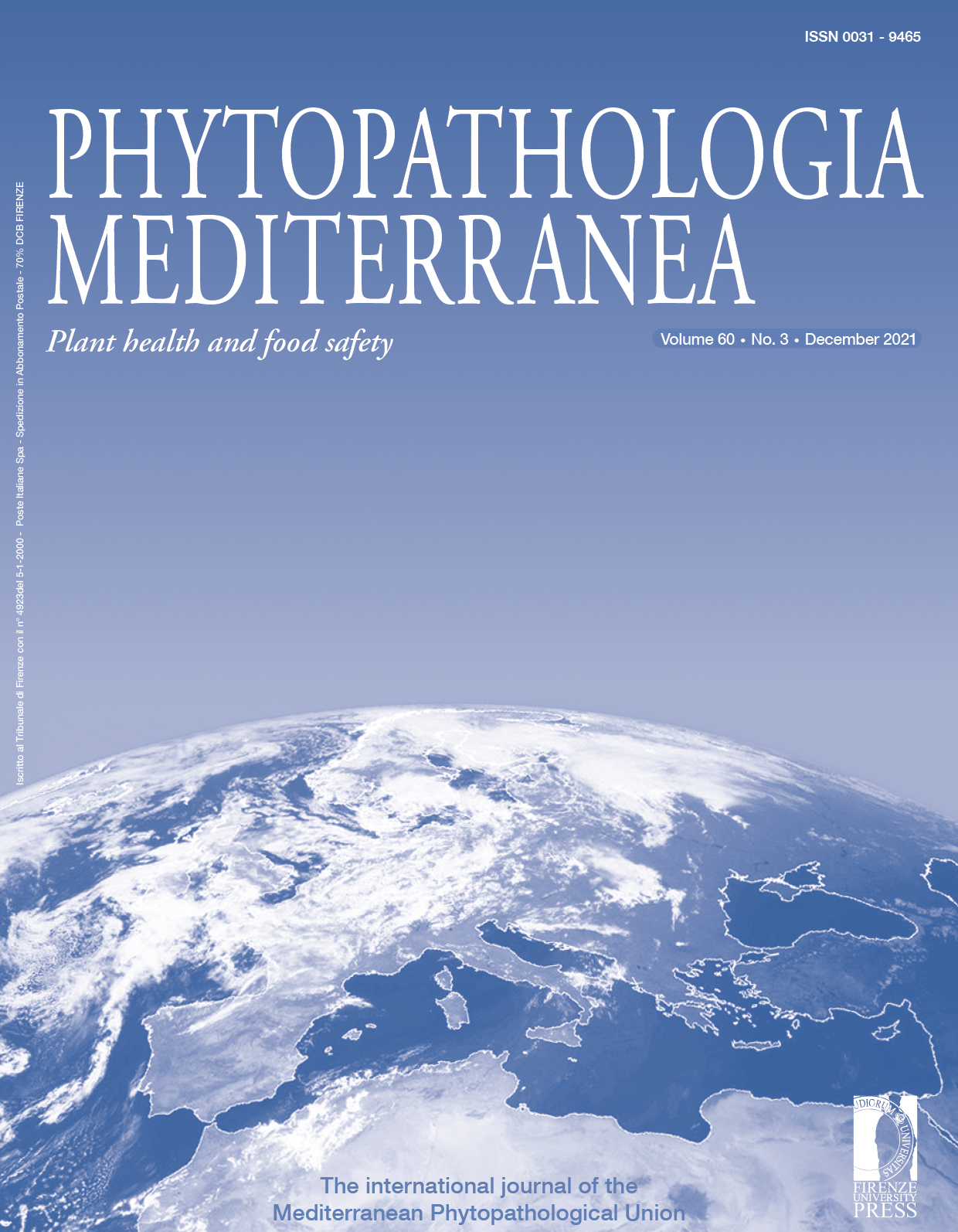Dissemination of esca-related pathogens in German vineyards: do arthropods play roles in vectoring spores?
Published 2021-12-30
Keywords
- Grapevine trunk diseases,
- Phaeomoniella chlamydospora,
- Phaeoacremonium spp.,
- Cadophora luteo-olivacea,
- dispersal
- pruning wounds ...More
How to Cite
Abstract
Grapevine Trunk Diseases (GTDs) such as esca challenge viticulture. The main fungal agents of Petri disease or young esca, Phaeomoniella chlamydospora (Pch), diverse Phaeoacremonium species (Pm spp.) and Cadophora luteo-olivacea (Clo), are transmitted to pruning wounds of vines by rain splashes and air currents. Arthropod-mediated dispersal is another possibility for the pathogens to reach pruning wounds. The present study was the first to evaluate possible involvement of arthropods in the dissemination process of esca-related pathogens in German vineyards. Diversity of arthropods on grapevine trunks was determined in 2019 and 2020, using cardboard traps mounted on vine trunks. Captured arthropods were surveyed for the presence of esca-related pathogens on their exoskeletons by using a nested multiplex PCR. In total, 2099 arthropods were examined, of which 35% were positive for Phaeomoniella chlamydospora (Pch), 21% for Phaeoacremonium spp. (Pm), and 7% for Cadophora luteo-olivacea (Clo). Earwigs and spiders were the most prevalent trapped arthropods; Pch was detected on 27% of earwigs and 38% of spiders, Pm spp. on 17 and 19%, and Clo on 3 and 8% of these arthropods. In both years, arthropods carrying the pathogens were already present in April, and therefore within the presumed susceptibility phase of pruned vines. These results indicate involvement of arthropods in the dispersal of esca-related pathogens in German vineyards. Further research, particularly to determine the infection potential of insect-borne fungi, is needed to confirm transmission risk. These results underline the importance of protecting vine pruning wounds to prevent host invasion by GTD pathogens.







